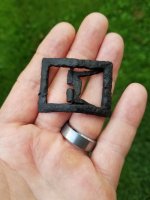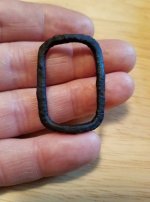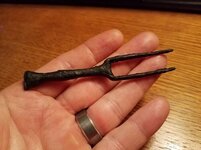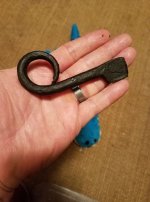metaldetecta
Hero Member
- Jun 10, 2013
- 608
- 607
- 🏆 Honorable Mentions:
- 1
- Detector(s) used
- Ace 250, AT Pro and Garret Pro Pointer
- Primary Interest:
- All Treasure Hunting
I did my first ever electrolysis project and got good results. How do I preserve the iron so it doesn't corrode or rust without doing damage to the artifact? I believe what I have is a meat hook. I need a method to use for the future.








 + you get very ugly rusty looking surface.
+ you get very ugly rusty looking surface.




